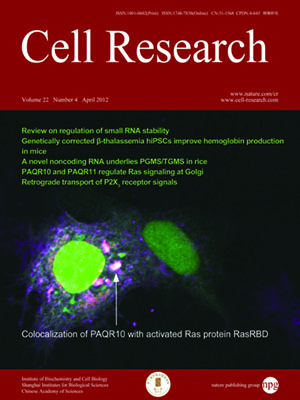
Volume 22, No 4, Apr 2012
ISSN: 1001-0602
EISSN: 1748-7838 2018
impact factor 17.848*
(Clarivate Analytics, 2019)
Volume 22 Issue 4, April 2012: 616-619
RESEARCH HIGHLIGHTS
Rejuvenating liver and pancreas through cell transdifferentiation
Fei Yi1, Guang-Hui Liu1,3 and Juan Carlos Izpisua Belmonte1,2
1Gene Expression Laboratory, Salk Institute for Biological Studies, 10010 North Torrey Pines Road, La Jolla, California 92037, USA
2Center for Regenerative Medicine in Barcelona, Dr. Aiguader 88, 08003 Barcelona, Spain
3National Laboratory of Biomacromolecules, Institute of Biophysics, Chinese Academy of Sciences, Beijing 100101, China
Correspondence: Juan Carlos Izpisua Belmonte, Guang-Hui Liu,(belmonte@salk.edu, izpisua@cmrb.eu; ghliu@ibp.ac.cn)
Induced pluripotent stem cells (iPSCs) and the cell transdifferentiation technologies are providing powerful tools to generate patient-specific cells for research and therapeutic applications. Hepatocytes and pancreatic β cells are two endoderm-derived cell types drawing much attention due to their indispensable physiological functions and strong association with various diseases. Recent advances in hepatocyte and β cell transdifferentiation have provided valuable insights into how to regenerate and restore normal functions of liver and pancreas under pathological conditions.
Cell Research (2012) 22:616-619. doi:10.1038/cr.2012.33; published online 28 February 2012
FULL TEXT | PDF
Browse 2056


